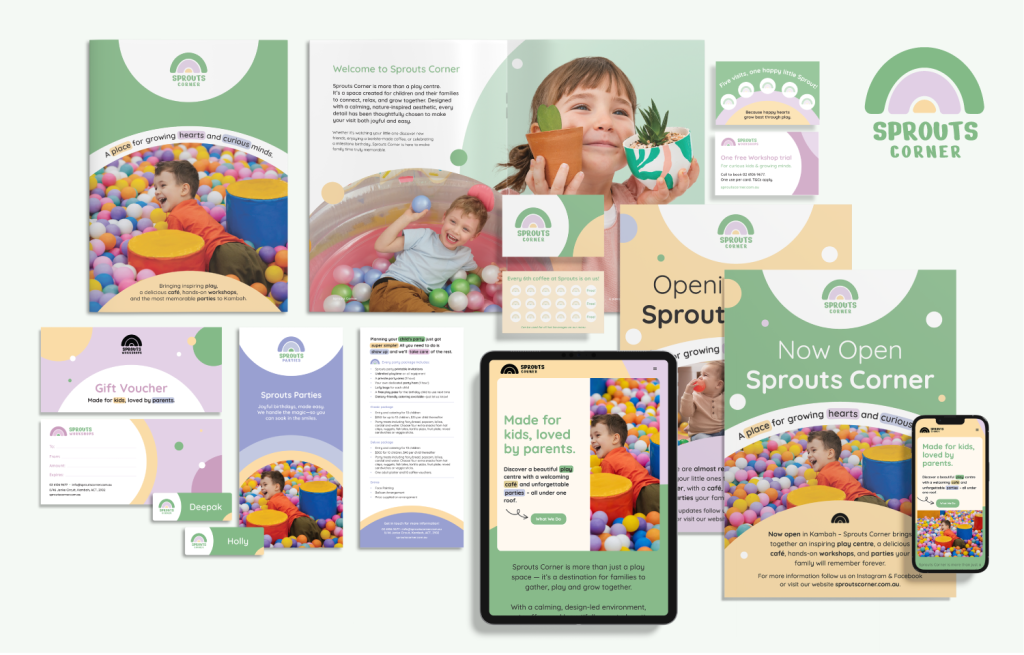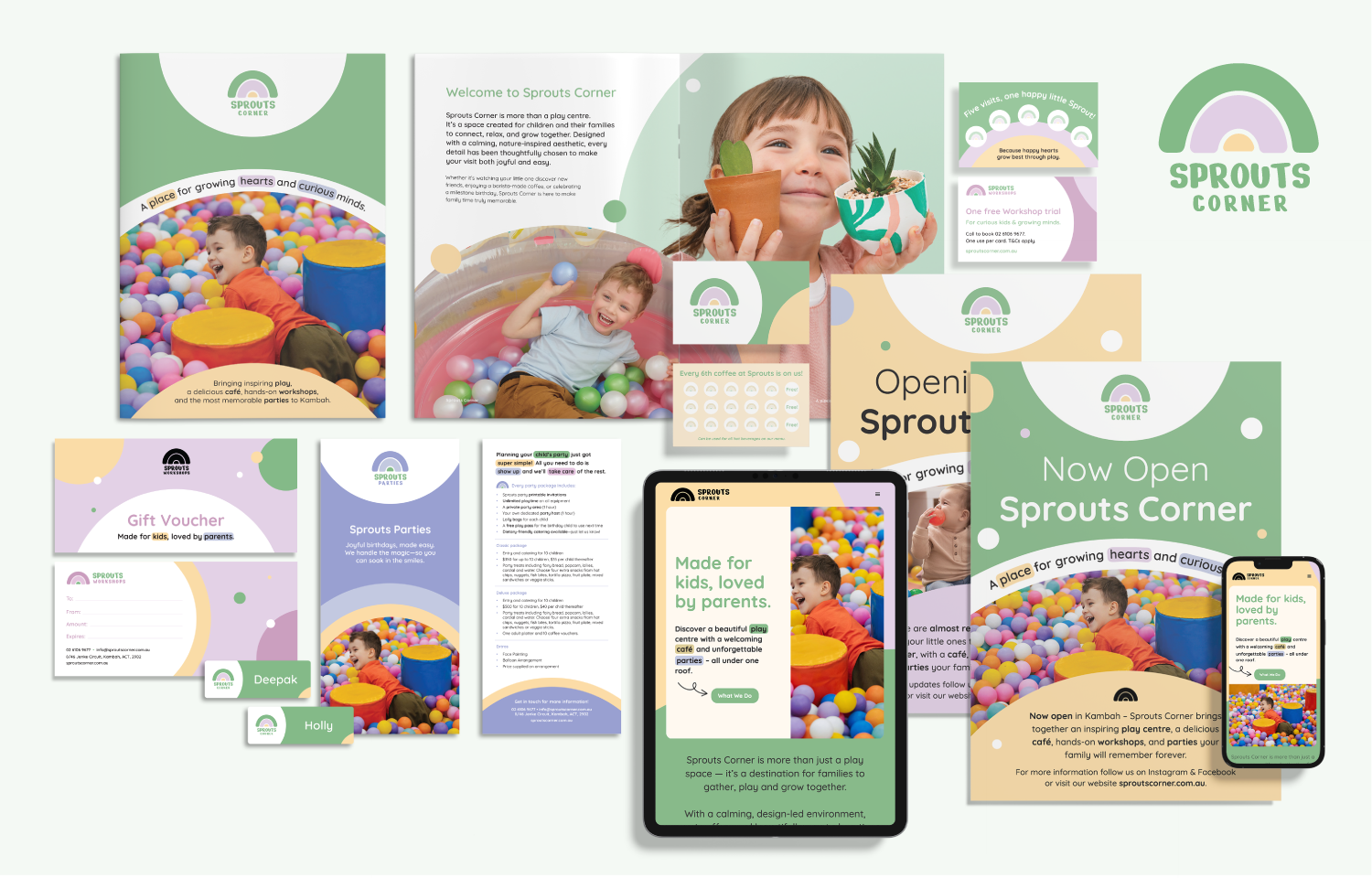Building a strong brand is no longer just an option. It’s a necessity.
For emerging Australian businesses, particularly those based in Canberra and the ACT, effective brand building is one of the most powerful ways to gain trust, attract loyal customers, and differentiate from competitors.
Whether you’re a startup finding your voice or a growing company ready to scale, a clear and consistent brand strategy sets the foundation for long-term success.
At one x, a full-service marketing agency in Canberra, we’ve seen firsthand how the right branding approach can transform a business from overlooked to unforgettable.
Below, we explore practical strategies to help you build a brand that resonates in the Australian market, with a focus on startup branding tips, Canberra brand strategy and business branding in the ACT.
1. Start with Purpose: Define What Your Brand Stands For
Every strong brand begins with purpose. It’s not just what you sell; it’s why you exist. In Australia, customers connect with brands that stand for something meaningful.
Ask yourself:
- • What problem does your business solve for your customers?
- • Why does your brand matter to people in Australia or your local region?
- • How do you want your customers to feel after interacting with your brand?
For example, a Canberra-based food startup might position itself around sustainability and sourcing local produce. The purpose becomes a powerful differentiator — a story customers can connect with.
Defining your purpose gives your brand direction, ensures consistency in messaging, and builds emotional loyalty among your audience. When you engage in brand building Australia-wide, purpose anchors everything; from visuals to voice to customer experience.
2. Understand Your Market and Audience
Before diving into design and messaging, it’s vital to understand the people you want to reach. Conduct thorough market research to uncover insights about your audience’s demographics, behaviour, and motivations.
For brand building in Australia, this means identifying how local culture, values, and expectations shape customer choices. Australians often value authenticity, sustainability and transparency, and those themes often influence purchasing decisions.
A Canberra brand strategy should also consider the city’s growing reputation as a hub for innovation, education and entrepreneurship. Knowing what matters to your audience helps you craft a brand identity that feels relatable and relevant.
Your research should look at:
- • Who is your ideal customer (age, occupation, location, lifestyle)?
- • What are their pain points? What motivates them?
- • Where are they spending time (online/offline)?
- • What brands do they already engage with and why?
Good research makes your branding smarter, more targeted and more effective.
3. Craft a Distinct Brand Identity

Your brand identity — including your name, logo, colours, typography, and tone of voice — should reflect your purpose and resonate with your audience. Visual elements are often the first touchpoints a customer experiences, so consistency is key.
Tips for building a memorable brand identity:
- • Keep it simple: Avoid over-complicated logos or messages. Clarity helps with recall.
- • Be consistent: Use the same tone, colours and design elements across all channels, online and offline.
- • Reflect your values: A brand built on trust or sustainability should visually communicate those ideals.
- • Local relevance matters: In the ACT and across Australia, your visuals and tone should fit the market. A Canberra brand strategy that doesn’t take the local context into account may feel disconnected.
For emerging brands, partnering with an agency like one x ensures your visual and verbal identity align perfectly with your target market, and with your broader brand building goals in Australia.
Related: The Power of Local Partnerships: Collaborating with Other Canberra Businesses for Mutual Growth
4. Develop a Compelling Brand Story
People remember stories, not statistics. Your brand story should communicate your journey, values, and vision in a way that connects emotionally with customers.
Consider incorporating:
- • Your origin: Why and how did your business begin?
- • Your mission: What drives you forward?
- • Your impact: How are you making a difference?
For example, a small Australian skincare brand might tell a story of using native botanicals inspired by the country’s natural landscape and be transparent about sourcing. This narrative not only captures attention but also strengthens brand authenticity.
Good story-telling anchors all your startup branding tips and supports sustainable business branding in the ACT by making you memorable and meaningful to your audience.
5. Create a Consistent Online Presence
In today’s always-online world, your online presence is a major part of your brand. A strong digital footprint builds awareness, credibility and connection. Read: Why Brand Experience Matters More Than Ever in the Digital Age.
Key digital branding tactics:
- • Optimise your website: Ensure your website reflects your brand identity, loads quickly, and provides a great user experience. For Canberra businesses, local SEO can help attract nearby customers. one x emphasises this in its full-service marketing services.
- • Use social media strategically: Choose platforms where your audience is most active. Share valuable content — not just promotions — to build relationships and trust.
- • Leverage content marketing: Blogs, videos, case studies showcase expertise and reinforce your brand’s authority. This supports your broader strategy of brand building Australia-wide.
- • Ensure brand voice consistency: Whether on LinkedIn for B2B or Instagram for consumer-facing brands, your tone should reflect your positioning and values.
At one x, we help Australian startups develop cohesive digital ecosystems that connect every touchpoint — from websites to social channels — under one unified brand strategy.
Related: How to Leverage Social Media to Market Real Estate Projects in Canberra
6. Invest in Brand Positioning

Your brand positioning defines how your business is perceived in the market compared to competitors. Effective positioning ensures that when customers think of a need, they think of you first.
To develop strong positioning:
- Identify your unique selling proposition (USP) — what makes you different?
- Analyse your competitors — what are they offering, and where can you stand out?
- Clarify your messaging — what do you want your audience to remember about you?
- Consider your market context — for example, in Canberra, you may highlight local expertise or community connection as part of your Canberra brand strategy.
Clear brand positioning prevents confusion and helps you capture your ideal audience from the beginning. It also serves as the backbone for all marketing decisions and supports long-term business branding in the ACT.
7. Build Trust Through Authentic Communication
Australian consumers are highly attuned to authenticity. Overly polished or exaggerated claims can backfire. Instead, communicate with honesty and transparency.
- • Share behind-the-scenes content to humanise your brand.
- • Highlight real customer stories or testimonials.
- • Admit mistakes and show how you’re improving (people appreciate honesty).
- • Use consistent messaging that aligns with your values.
A trustworthy brand naturally builds loyalty and referrals which are both essential for sustainable growth. This authenticity further boosts your brand building Australia strategy by creating advocates rather than just customers.
8. Focus on Experience, Not Just Exposure
Brand building isn’t only about being seen. It’s about being remembered. Every customer interaction shapes your brand perception, from your website interface to your email tone.
To improve business branding in Australia, ensure that your customer journey feels seamless and aligned with your values. For example, a helpful, supportive tone in your social media should match your customer service interactions.
When your business is building a brand, every touchpoint matters:
- • First impression (website / landing page)
- • Purchase experience
- • After-sales follow-up
- • Referral or loyalty programmes
Customer experience is where your brand promise is tested and where loyalty is earned.
Related: Craft a Winning Marketing Strategy: Essential Steps for Business Success
9. Collaborate with Local Partners and Communities

A uniquely effective approach for brand building in Australia is community engagement. Partnering with local organisations, joining events, or supporting regional initiatives can strengthen your reputation and visibility.
For example:
- • Sponsor a Canberra community event.
- • Collaborate with local creators or small businesses.
- • Participate in ACT-based networking groups or business chambers.
These initiatives not only increase exposure but also demonstrate your brand’s commitment to local growth and collaboration — which is especially meaningful for Canberra brand strategy and business branding in the ACT. Read: Our Culture
10. Evolve with Purpose
A strong brand is never static. As your business grows, your audience and market will evolve too. Periodic brand audits ensure your identity, messaging, and values remain relevant and aligned.
Ask:
- • Does our current branding still reflect who we are today?
- • Are we appealing to the right audience?
- • How has the market changed since we started?
Revisiting your strategy ensures your brand continues to resonate with new generations of customers while staying true to its core purpose. This is a vital step in long-term brand building Australia-wide.
Related: How to Build a Strong Brand for Your Property Development Project
Final Thoughts
For emerging Australian businesses, brand building is both an art and a strategy. It requires consistency, clarity, and authenticity.
Whether you’re launching a new venture or refreshing your existing brand, focusing on purpose, positioning, and experience can transform your business into a memorable and trusted name.
At one x, we help startups and established brands across Canberra, the ACT and wider Australia build meaningful identities that drive growth.
Our integrated approach — combining strategy, design, and digital expertise — ensures your brand doesn’t just look good, but delivers measurable results.
Book a FREE Consult with our branding experts at one x today.












